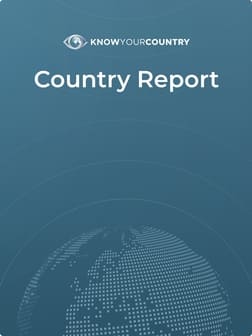
Philippines Country Summary
Sanctions
Low Concern
FATF AML Deficient List
High Concern
Terrorism
High Concern
Corruption
High Concern
US State ML Assessment
High Concern
Criminal Markets (GI Index)
High Concern
EU Tax Blacklist
Low Concern
Offshore Finance Center
High Concern
Please note that although the below Summary will give a general outline of the AML risks associated with the jurisdiction, if you are a Regulated entity then you may need to demonstrate that your Jurisdictional AML risk assessment has included a full assessment of the risk elements that have been identified as underpinning overall Country AML risk. To satisfy these requirements, we would recommend that you use our Subscription area.
If you would like a demo of our Subscription area, please reserve a day/time that suits you best using this link, or you may Contact Us for further information.
Anti Money Laundering
FATF Status
Philippines is on the FATF List of Countries that have been identified as having strategic AML deficiencies.
Latest FATF Statement - 21 February 2025
The FATF welcomes the Philippines’ significant progress in improving its AML/CFT regime. The Philippines strengthened the effectiveness of its AML/CFT regime to meet the commitments in its action plan regarding the strategic deficiencies that the FATF identified in June 2021 by (1) demonstrating that effective risk-based supervision of DNFBPs is occurring; (2) demonstrating that supervisors are using AML/CFT controls to mitigate risks associated with casino junkets; (3) implementing the new registration requirements for MVTS and applying sanctions to unregistered and illegal remittance operators; (4) enhancing and streamlining LEA access to BO information and taking steps to ensure that BO information is accurate and up-to-date; (5) demonstrating an increase in the use of financial intelligence and an increase in ML investigations and prosecutions in line with risk; (6) demonstrating an increase in the identification, investigation and prosecution of TF cases; (7) demonstrating that appropriate measures are taken with respect to the NPO sector (including unregistered NPOs) without disrupting legitimate NPO activity; (8) enhancing the effectiveness of the targeted financial sanctions framework for both TF and PF; and (9) applying cross-border measures in all main international sea/airports, in line with the risk.
The Philippines should continue to work with APG to sustain its improvements in its AML/CFT system. The FATF encourages the Philippines to continue its work in ensuring that its CFT measures are appropriately applied, particularly the identification and prosecution of TF cases, and are neither discouraging nor disrupting legitimate NPO activity.
Compliance with FATF Recommendations
The last follow up Mutual Evaluation Report relating to the implementation of anti-money laundering and counter-terrorist financing standards in the Philippines was undertaken in 2022. According to that Evaluation, the Philippines was deemed Compliant for 8 and Largely Compliant for 29 of the FATF 40 Recommendations. It remains Highly Effective for 0 and Substantially Effective for 1 with regard to the 11 areas of Effectiveness of its AML/CFT Regime.
Sanctions
There are no international sanctions currently in force against this country
Criminality
Rating |
0 (bad) - 100 (good) |
|---|---|
| Transparency International Corruption Index | 33 |
| World Bank: Control of Corruption Percentile Rank | 33 |
Corruption remains a significant issue in the Philippines, with the country ranking 117th in Transparency International's 2021 Corruption Perceptions Index, its lowest score in nine years. The government has implemented various strategies to combat corruption, including the establishment of the Presidential Complaint Center and legal frameworks aimed at addressing graft and misconduct. However, challenges persist, including limited convictions for corrupt officials and the intertwining of organized crime with political structures, exacerbated by the COVID-19 pandemic's impact on poverty and vulnerability.
Economy
The Philippines is focused on enhancing its investment climate and recovering from the impacts of the COVID-19 pandemic, maintaining investment-grade sovereign credit ratings despite rising public debt and inflation concerns. In 2021, foreign direct investment inflows reached a record USD 10.5 billion, marking a significant rebound, although the country still lags behind its ASEAN peers in attracting foreign investment. Key sectors for FDI include manufacturing, energy, financial services, and real estate, while challenges such as poor infrastructure, high costs, and regulatory inconsistencies continue to hinder further investment.
The investment climate in the Philippines is characterized by a commitment to improving foreign direct investment (FDI) despite challenges such as high public debt and inflationary pressures. In 2021, FDI inflows rebounded significantly to USD 10.5 billion, marking a 54 percent increase from 2020, although the country still lags behind its ASEAN peers in attracting foreign investments. Recent legislative amendments have aimed to open up various sectors to greater foreign ownership, yet issues like poor infrastructure, regulatory inconsistencies, and corruption continue to deter potential investors.

Buy Full Philippines Report
$125 one time payment
- Risk Analysis
- Corruption
- Economy
- Sanctions
- Narcotics
- Executive Summaries
- Investment Climates
- FATF Status
- Compliance
- Key Findings
